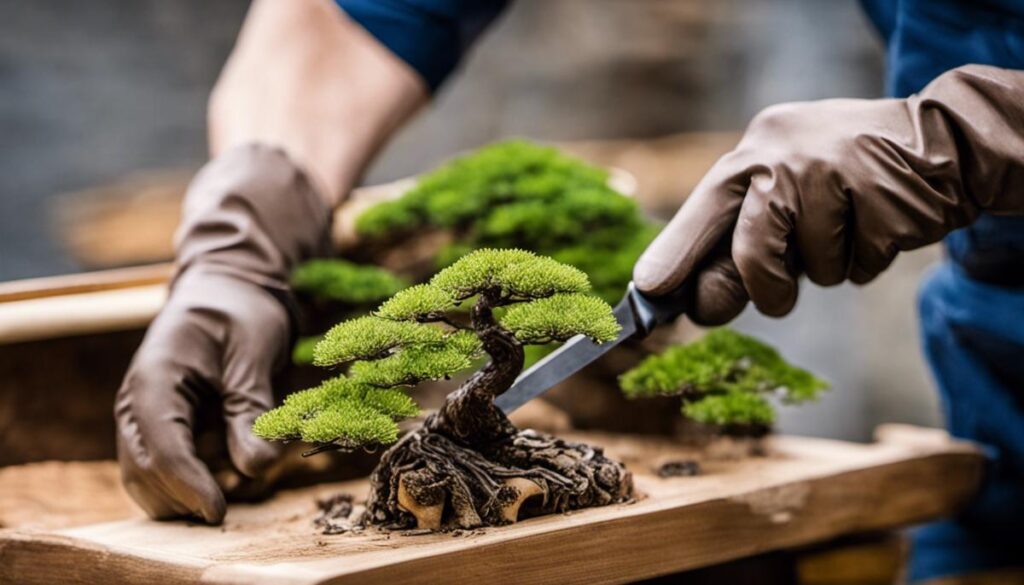The intricate art of Bonsai is a blend of horticulture and aesthetics, a delicate dance between man and nature that gives birth to living sculptures. Key to this intricate dance is the use of Bonsai and Shari techniques, the latter adding age and a unique characteristic appearance to the Bonsai trunk, simulating the imperfections one might see in full-sized trees.
To fully understand and appreciate this craft, it’s essential to delve into the nuances of these techniques, from understanding the basics of Bonsai and the significance of Shari techniques to learning to design and plan your Bonsai trunk.
Understanding Bonsai and Shari Techniques
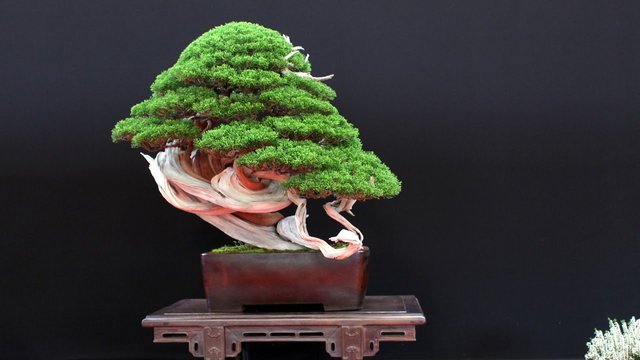
Understanding Bonsai: The Art of Miniature Trees
Bonsai is a traditional Japanese art form that involves cultivating and styling miniature trees within containers to mimic the shape and style of full-size trees. This practice demands patience and care, with the intent of creating a sense of peace and balance in the viewer. Bonsai trees are not a specific type of tree; rather, almost any tree or shrub species can be pruned and shaped into a bonsai. The cultivation requires techniques including pruning, root reduction, potting, defoliation, and grafting to maintain the tree’s small size and to shape it.
The aesthetics of bonsai are based on the harmonious combination of the tree, pot, and overall arrangement. Individual styles and designs can vary greatly—some trees are styled to echo the harsh conditions of bonsai’s Alpine origins, while others may reflect more serene woodland settings. Attention is also paid to the balance between the tree and its pot, and to the tree’s position within that pot.
Introduction to Shari Techniques: Creating Age and Character
Shari techniques form a critical part of cultivating bonsai trees, allowing the tree to exhibit its character and age. In nature, the bark on older trees may deteriorate and strip away in sections, revealing the pale, deadwood beneath. This natural process is mimicked in bonsai through the Shari technique, where sections of the bark are manually removed to give an appearance of age and ruggedness.
To create Shari, portions of the trunk are stripped of their bark and cambium layer using a sharp knife or other tools. Care is required to avoid damaging the tree’s overall health. The Shari sections are then treated with lime sulfur to bleach the exposed wood and protect against harmful fungi and insects.
Shari Techniques: Enhancing Bonsai Aesthetics
The size, shape, and position of the Shari sections can greatly influence the tree’s characteristics and perceived age. They can either be in the form of a narrow strip running down the trunk, called a “Shari line,” or a larger area of deadwood on the trunk, known as a “plateau Shari.” Precision and careful judgment are required while creating Shari as the strip of deadwood cannot extend around the entire trunk, which could compromise the tree’s health.
The Shari technique’s significance lies in its ability to highlight a tree’s unique character and suggest a narrative of survival against the elements. A well-executed Shari can greatly enhance the aesthetics of a bonsai tree, giving it an appearance that suggests an old and toughened tree that has weathered harsh conditions with grace. Remember, cultivating bonsai is a disciplined art that requires patience and vision. Progress can be slow, but the result is a living work of art that evolves and grows more beautiful over time.

Planning and Designing Bonsai Trunk
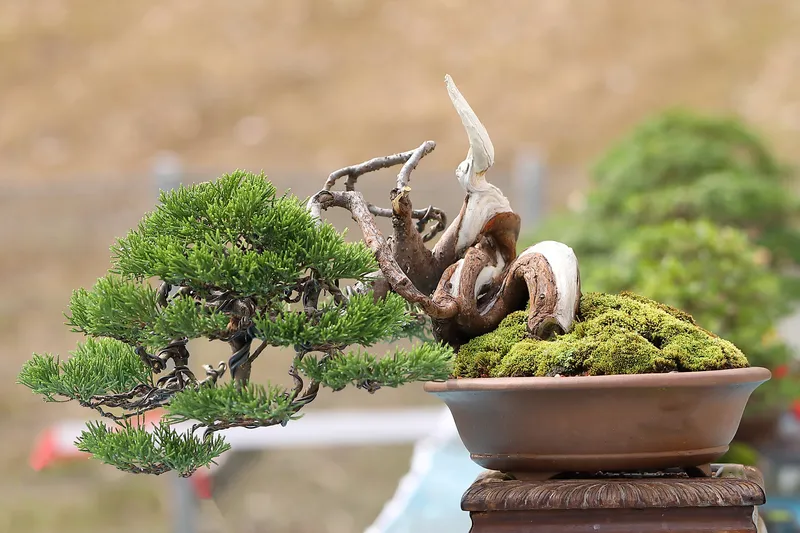
Understanding the Basics of Shari Techniques
Shari techniques allow you to create an aged-looking bonsai trunk, giving your tree unique character. This style is achieved by peeling sections of bark off the tree trunk, leaving the underlying wood exposed and giving the illusion that the tree has weathered harsh seasons throughout its life. The pattern and length of your Shari will depend on the style of bonsai you want to achieve.
Visualizing the Final Design
The first step in planning your bonsai is to visualize the final design. Keep in mind the style you want your Bonsai to emulate and consider sketching out some rough drafts of how you imagine your tree’s trunk to look. When you’re visualizing the final design, remember that asymmetry is a key element of bonsai design, intended to reflect the natural growth of trees in the wild.
Selecting Your Tree
When selecting your tree, consider its potential for Shari design. Choose a species with a robust and hardy bark that can tolerate the Shari techniques. Also think about the age, size and shape of the tree. Younger trees may be less suitable as their bark is often too thin and fragile for these techniques, while older trees may have developed unique characteristics that can be highlighted through Shari.
Considering Scale, Proportion and Balance
Scale, proportion and balance are key elements in bonsai design. The scale refers to the size of your tree and its elements relative to each other, while the proportion concerns the tree’s height in relation to its width. A well-balanced bonsai has a variety of features, with no one feature overpowering the others. Work to create a sense of harmony and balance in your bonsai design, paying attention to the trunk’s size compared with the tree’s overall size.
Implementing the Shari Technique
Mark out the lines for your Shari design with chalk before starting. Use a sharp scalpel to lightly score the bark along these lines, then peel it off, exposing the wood beneath. The newly exposed wood will naturally change color over time, adding to the character of your bonsai tree. The application of the Shari style will require attention to detail and careful execution. It’s advisable to practice the technique on a test tree before applying it to your chosen bonsai.
Maintaining Your Bonsai Trunk
After employing the Shari technique, it’s crucial to ensure that the exposed wood remains healthy and doesn’t decay. Biannual applications of lime sulfur can help protect the wood. This compound has antifungal properties and gives the wood an aged, bleached appearance that contributes further to the impression of an old, weather-worn tree.
Remember
These processes take time, and Bonsai design is considered long-term work. Maintain a patient and consistent approach to reach your envisioned design.
Practical Application of Shari Techniques
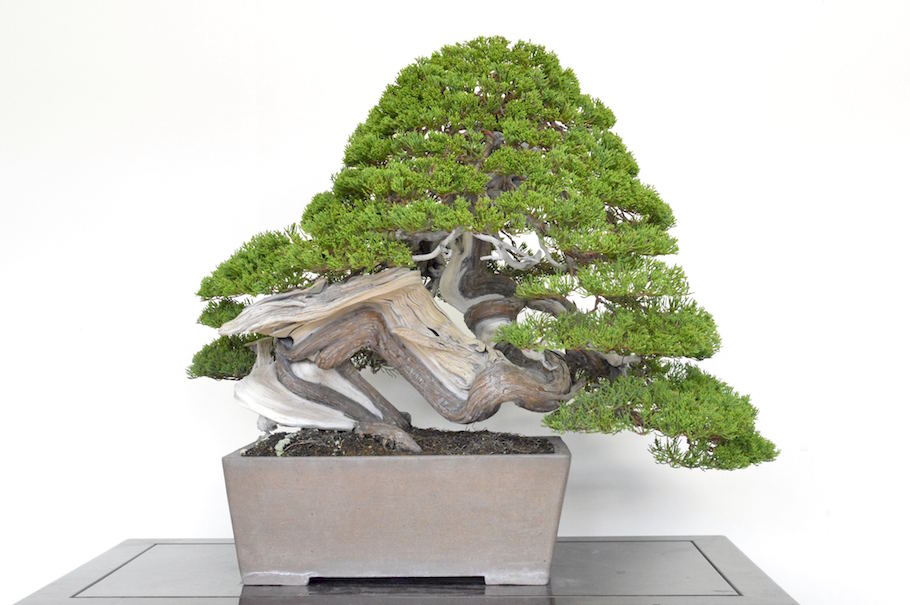
Understanding Shari Techniques
Shari is a bonsai technique where a section of bark is removed exposing the underlying trunk to create a unique and visually appealing aspect to the bonsai. This technique imparts a sense of age and vitality to the bonsai tree, making the tree appear as though it has weathered harsh natural elements over decades or centuries.
Materials Needed
Before starting, gather your tools. You’ll need a sharp knife or grafting tool, a wire brush, a goke brush, and lime sulphur solution. Ensure that all tools are clean and sharp.
Choosing the Right Spot
The first step is choosing the right area on the trunk to create the Shari. Particular consideration should be given to the tree species and age. The spot should not be a place that negatively impacts the mainline or other living parts of the tree.
Removing the Bark and Cambium Layer
Take the sharp knife and make an outline for the Shari. Deeply score the planned boundary of the Shari with the knife. This prevents any undesired tears from passing in to the untouched bark. Next, within the outlined area, slowly and carefully remove the outer bark and then the cambium layer underneath. Be sure not to damage the heartwood underneath.
Carving for Natural Appearance
Your goal in this step is to create the appearance of natural aging. After removing the bark and cambium layer, use your knife to carve and smooth the exposed trunk to mimic the look of a tree aged in the outdoors. Irregularities in the surface can provide the impression of natural erosion and other weathering effects, adding to the tree’s story.
Applying Lime Sulphur
After achieving the desired shape and texture, lime sulphur should be applied to the carved area. This application helps to protect the Shari and give it the desired whitish color. Lime sulfur is optional and a matter of personal aesthetic preference, but it does offer protection and preservation from rot and insects.
Caring for the Tree Post Operation
Post-operation care is just as important as the Shari formation itself. Bonsai trees need to recuperate after undergoing this process. Keep the tree away from harsh weather conditions after Shari formation. It’s recommended to put the tree in semi-shade and protect it from strong wind and extremes of temperature.
Long-Term Tree Care
Keep an eye on the Shari as time goes on. Sometimes healing may cause the tree to cover up the Shari. In such a case, you will need to clear it again. As the tree grows, the Shari may change its form and look more natural.
Remember
Remember, applying Shari techniques is kind of a surgical operation to the bonsai tree. Be cautious and gentle to avoid unnecessary injury and stress on the tree.
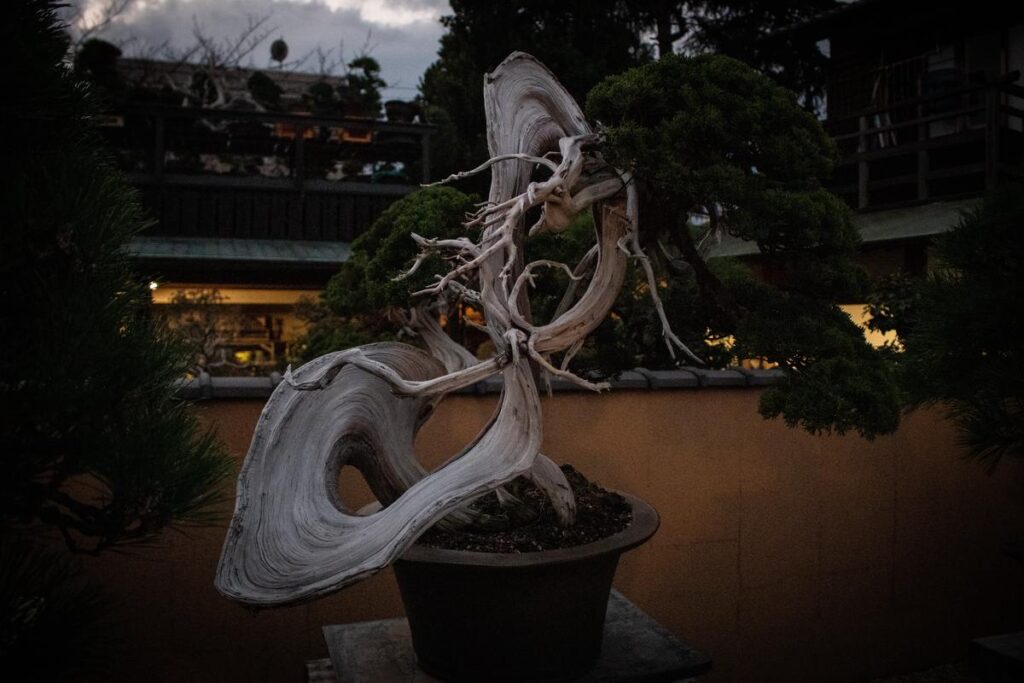
With patience, creativity, and careful practice, the Shari techniques can transform a young tree into a miniature old-looking Bonsai that’s full of character. This journey moves beyond the aesthetic transformation of the tree, delving into a learning experience that symbolises the trials and triumphs of life. Whether you’re a beginner or a seasoned Bonsai enthusiast, mastering the Shari techniques opens up an entire new dimension in this contemplative and rewarding art form. Continue to explore, learn and grow in your Bonsai journey, and let every tree you transform be an homage to the enchanting allure of nature wrapped into a small-scale piece.
